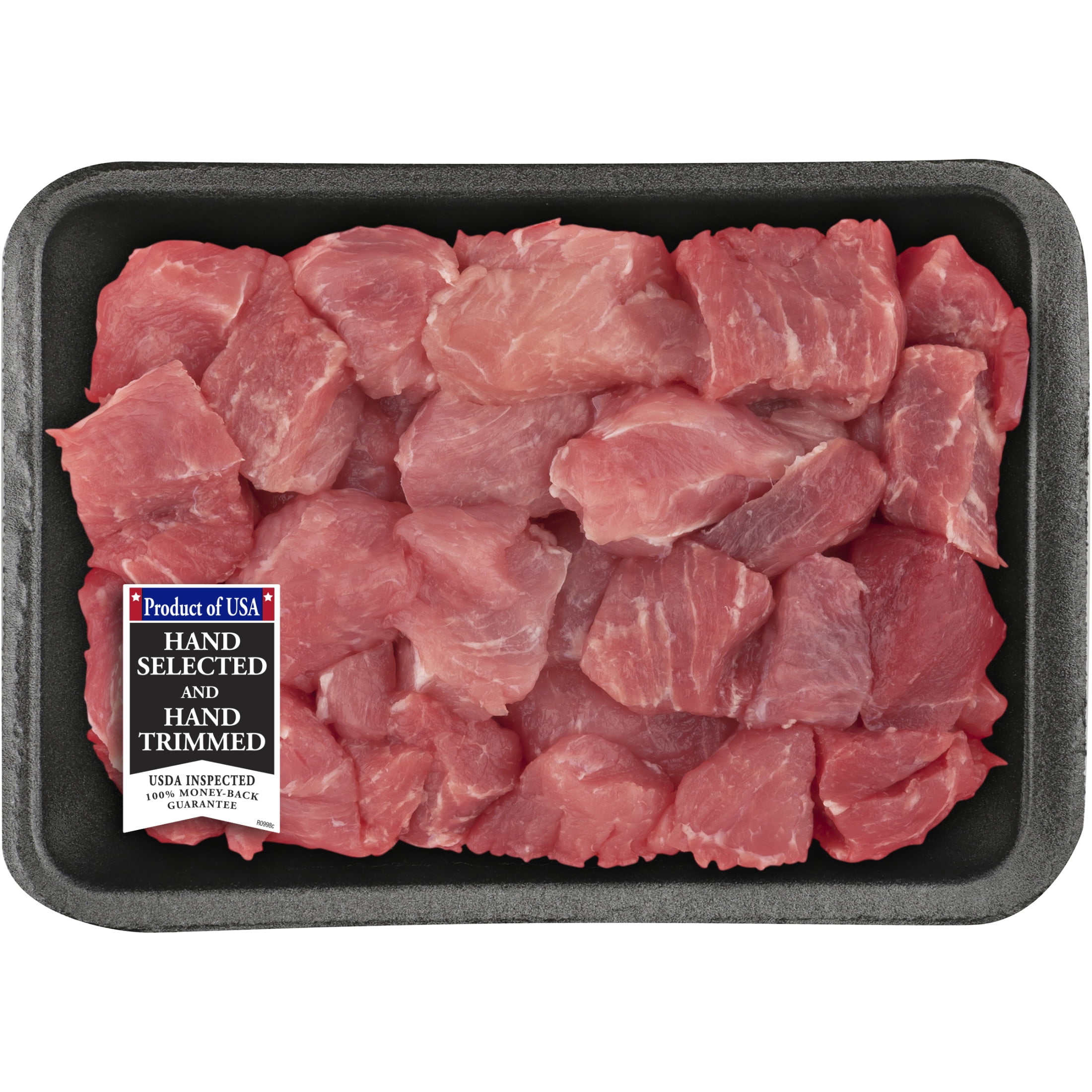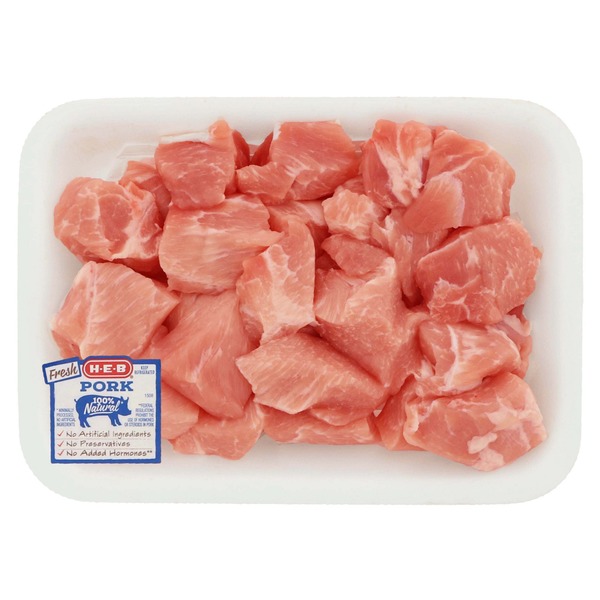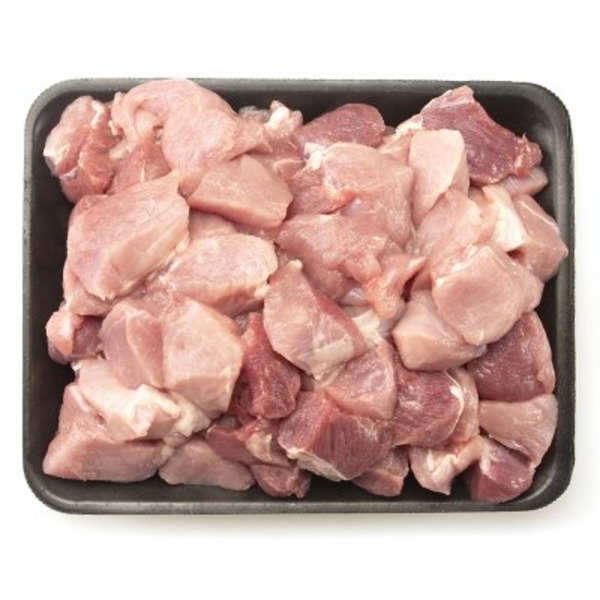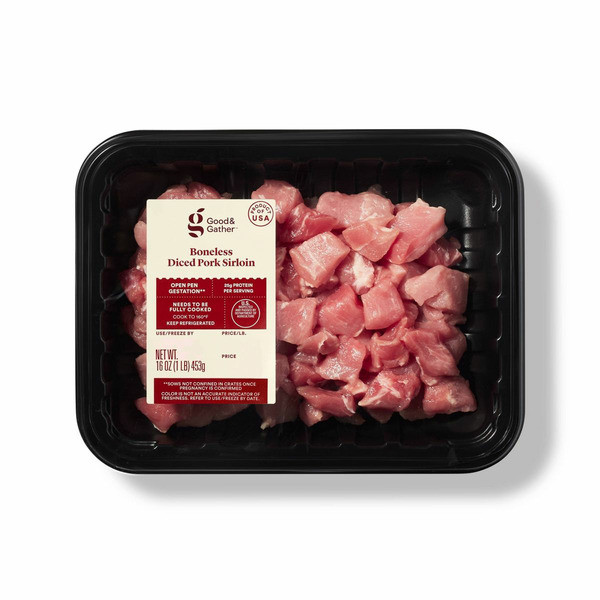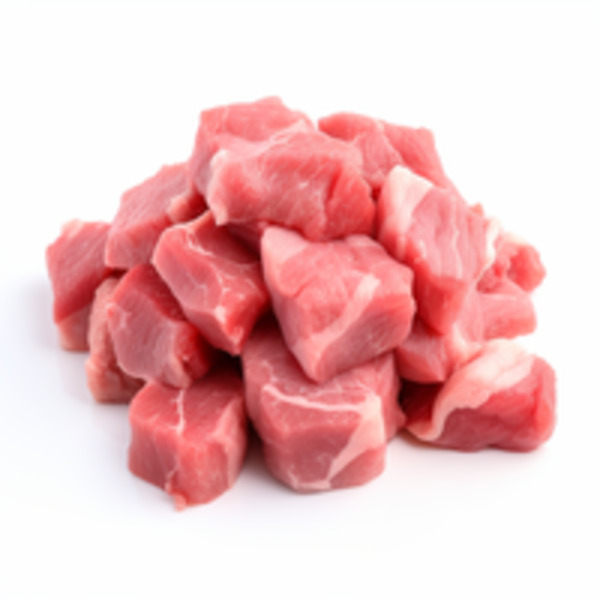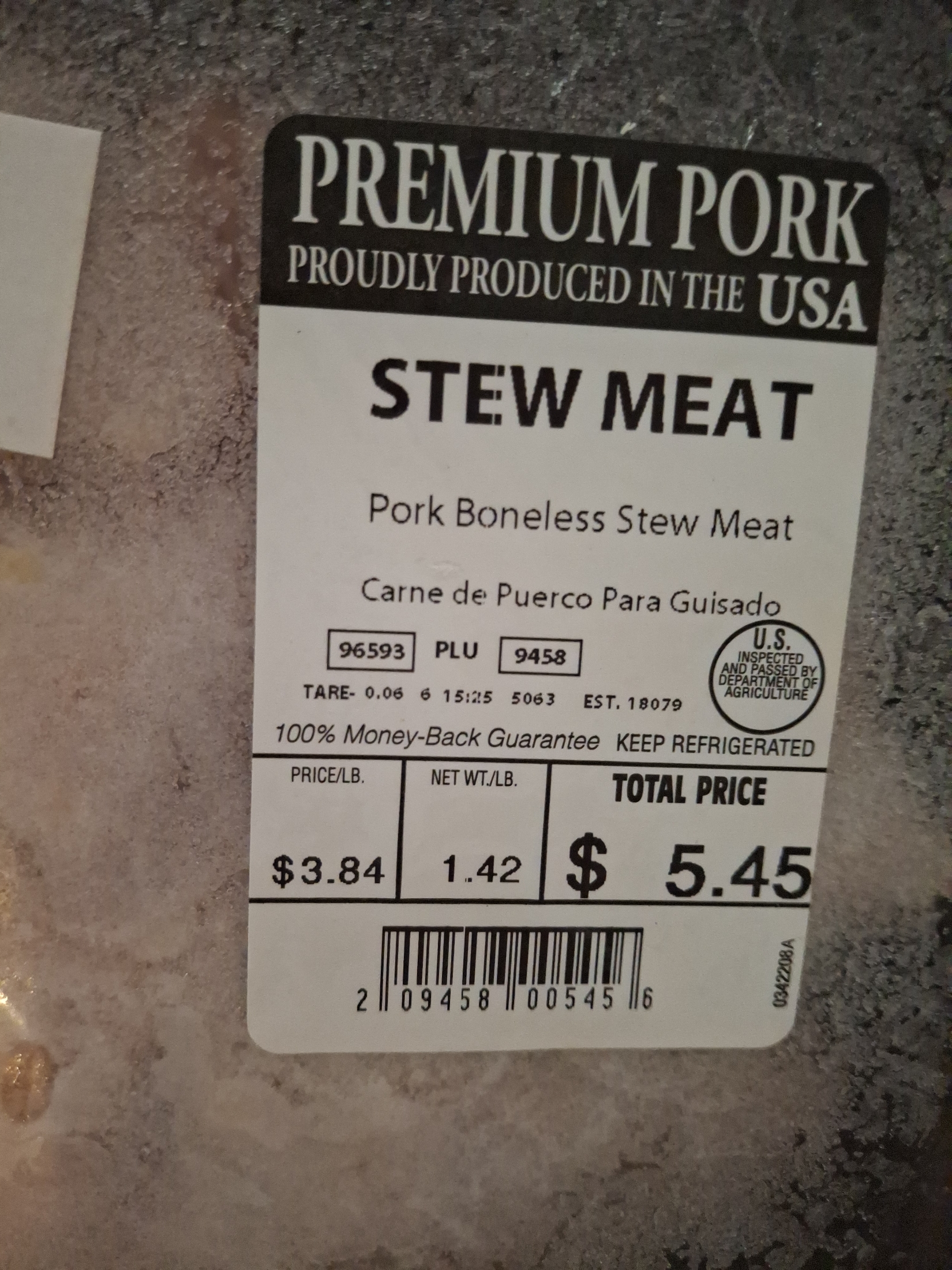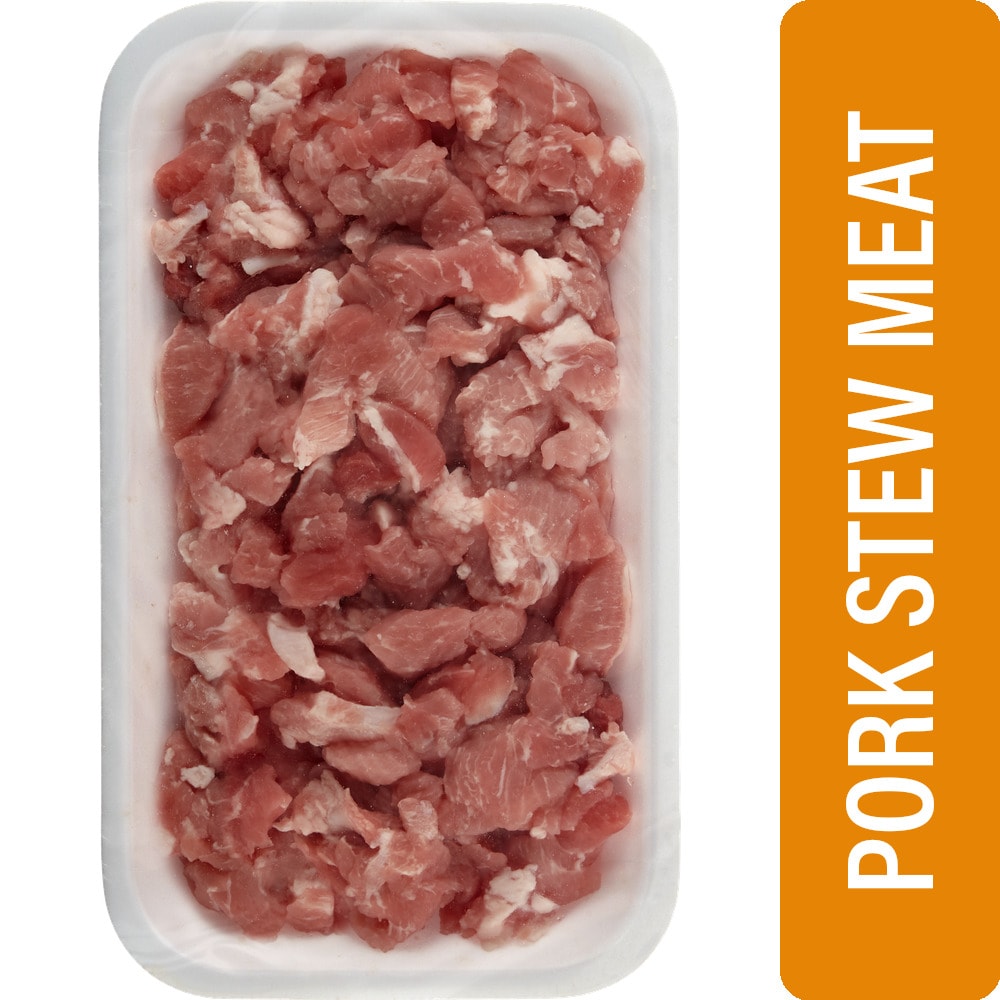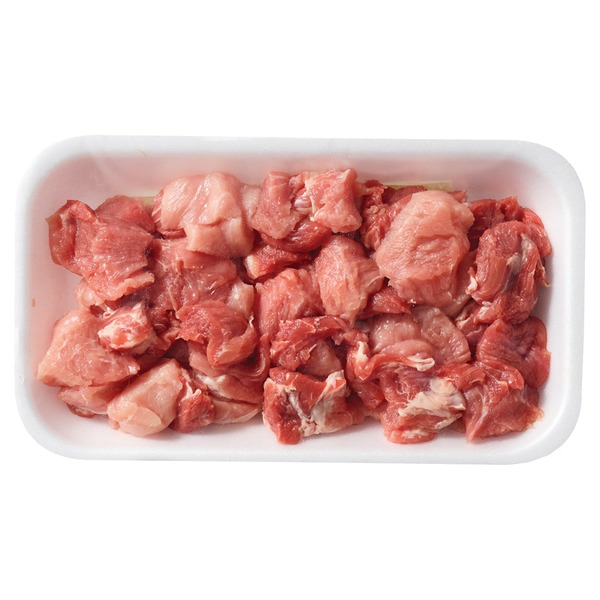MAIN DISHES
Pork Stew Meat
Pork stew meat, typically sourced from the tougher cuts such as shoulder or butt, is a versatile ingredient perfect for slow-cooking methods. Rich in flavor and inexpensive, it is ideal for delicious home-prepared dishes and an excellent protein source. As the meat cooks, the connective tissue breaks down, creating a delectably tender end product.
Popular for its ability to absorb flavors from accompanying ingredients, pork stew meat is a staple in numerous international cuisines for its use in dishes such as pozole, gumbo, feijoada, and more. When cooked low and slow, pork stew meat can create a satisfying meal for family gatherings or casual dinners.
0%
CARBS
15%
FAT
85%
PROTEIN
133 Pork Stew Meat Products
Used In 3 Recipes
Pork Stew Meat Is Frequently Used With
Pork Stew Meat FAQ
Cooking with pork stew meat might seem simple, but there are essential tips that can amplify its taste and overall quality. One common mistake is rushing the cooking process. It’s important to remember that stew meat is best when cooked low and slow, as this maximizes the breakdown of fibrous tissues, resulting in tender and succulent pieces. Overcooking or rapid cooking, on the other hand, can turn this meat tough and chewy.
Additionally, browning the pork before adding it to the stew enhances the flavor profile of the dish, creating a rich taste and beautiful color. It's all about the Maillard reaction, a chemical change that provides an enticing aroma and depth to your meat.
Lastly, marinating is a great way to introduce additional flavors to your pork stew meat. Adding acidic elements, like vinegar or citrus juices, can also tenderize your meat as they help break down tough proteins.
Tips and Tricks:
1. Cut your stew pork into equal-sized pieces to ensure even cooking.
2. Consider seasoning or marinating the meat the night before to allow flavors to penetrate more effectively. Just make sure not to add too much salt early on, as this may dry out your meat.
3. Utilize the 'low and slow' cooking method to bring out the tenderness of your stew meat. As tempting as it may be to speed up cooking, you ideally want to avoid this.
4. Remember to brown your meat before stewing to enhance the flavor. This also prevents the meat from sticking together during the stewing process.
5. Try pairing the pork stew meat with robust herbs and spices like rosemary, thyme, paprika, or cumin for a flavourful concoction.
Can I use pork stew meat in the slow cooker?
Do I need to marinate pork stew meat?
How long should I cook pork stew meat?
Can I replace beef with pork stew meat in recipes?
Why is my pork stew meat tough?
Should I cut the fat off my pork stew meat?
Why brown the pork stew meat before stewing?
What spices pair well with pork stew meat?
Can I use pork stew meat for stir fry?
Do I need to use a specific cut for pork stew meat?
Expiration & Storage Tips
When does pork stew meat expire?
The typical lifespan of pork stew meat can vary depending on how it is stored. If left unopened in the original store packaging and refrigerated, it can last 1-2 days past the 'sell by' date. Once the package is opened, the meat should be consumed within 3-4 days. If you opt to freeze the pork stew meat, it can last up to 6 months, and sometimes longer if stored properly.
How do you tell if pork stew meat is bad?
A few ways to tell if pork stew meat has gone bad include: a distinct sour smell that is noticeably different from the fresh meat smell; a slimy or sticky texture; a change in color, usually darkening or turning grey. If any of these signs are present, it's better to be safe than sorry and discard the meat.
Tips for storing pork stew meat to extend shelf life
• Always store pork stew meat in a refrigerator set to 40°F or below to maintain its quality and prevent bacterial growth.
• If you plan to freeze the meat, tightly wrap it in either heavy-duty plastic wrap, aluminum foil, or freezer paper. This reduces air exposure and helps prevent freezer burn.
• Always defrost the frozen meat in your refrigerator, never on your kitchen counter. This keeps the meat at a safe temperature as it thaws.
• Consider dividing the meat into recipe-sized portions before freezing. This way, you only defrost what you need for a single meal.
• When storing cooked stew, let it cool before placing it in the refrigerator to prevent raising the temperature of your fridge.
EXPIRES WITHIN
6 - 21
DAYS
Substitutes
Health Info
Macros
0g
CARBS
9g
FAT
50g
PROTEIN
Allowed on these diets
LOW FAT
HIGH CALCIUM
KETO
PALEO
WHOLE 30
MEDITERRANEAN
LOW CARB
LACTOSE FREE
GLUTEN FREE

